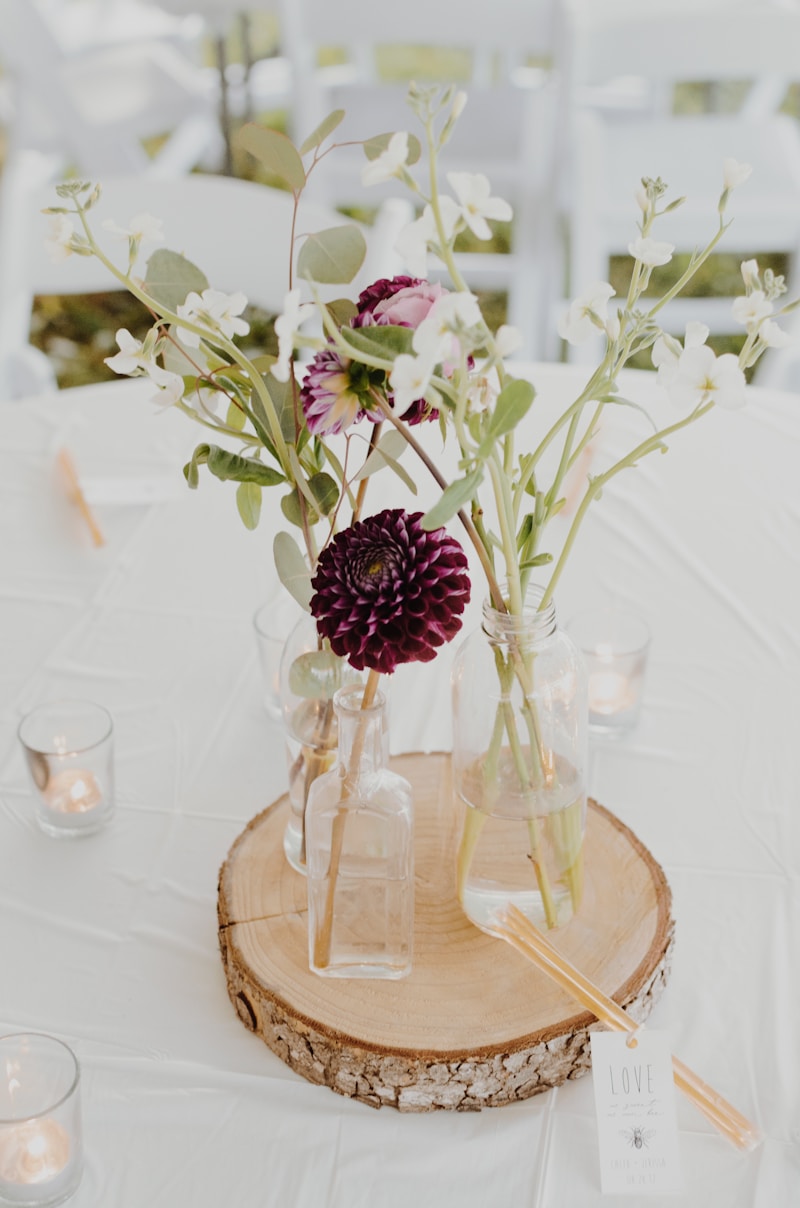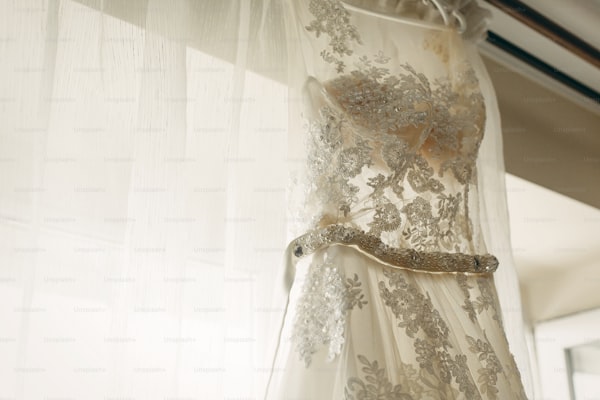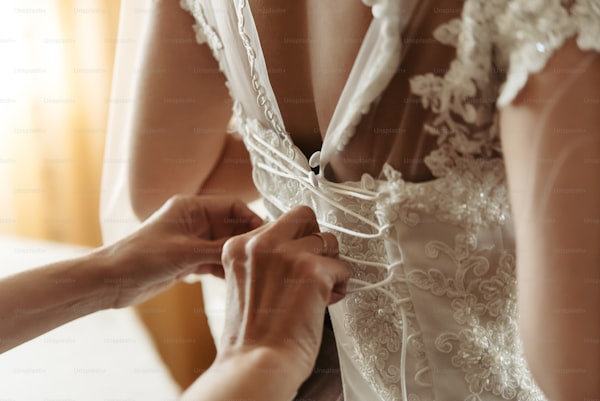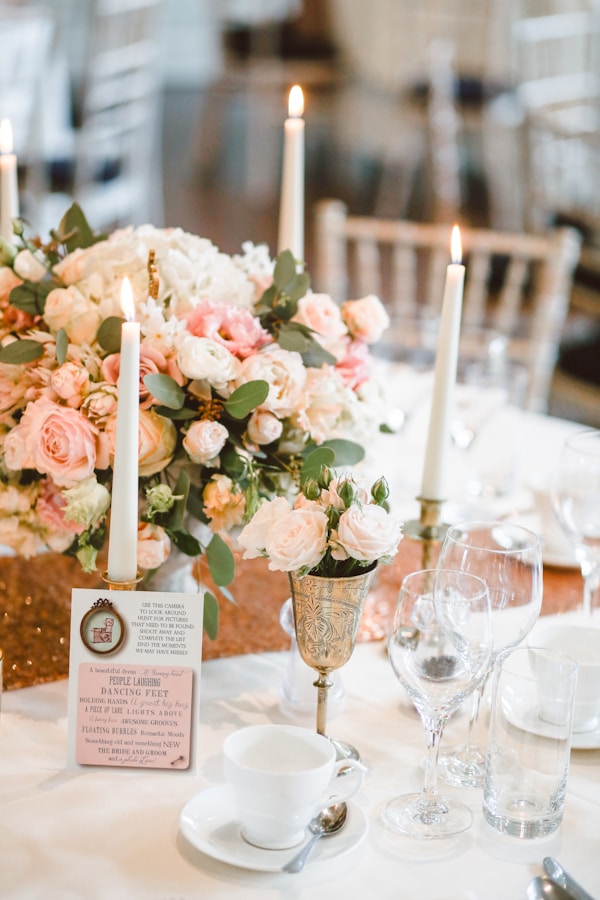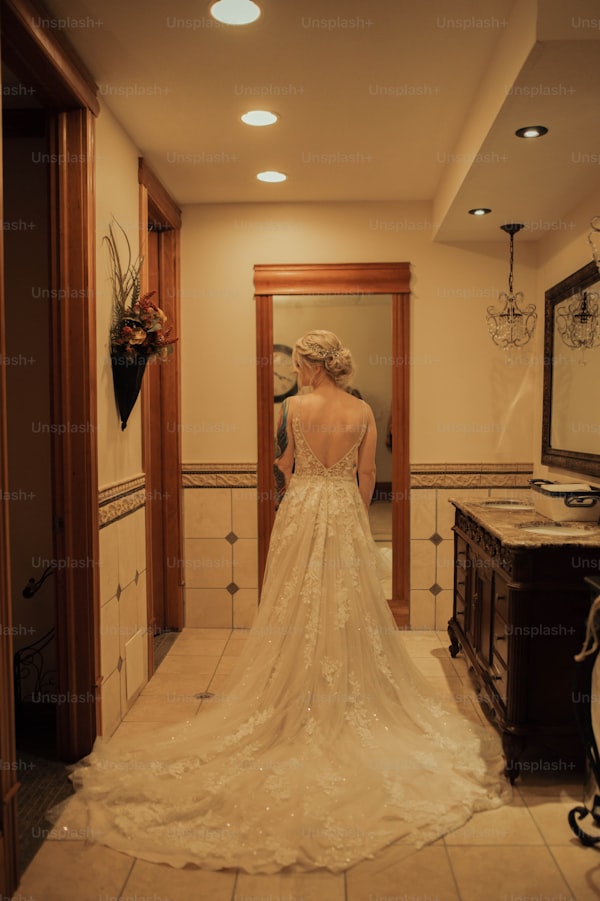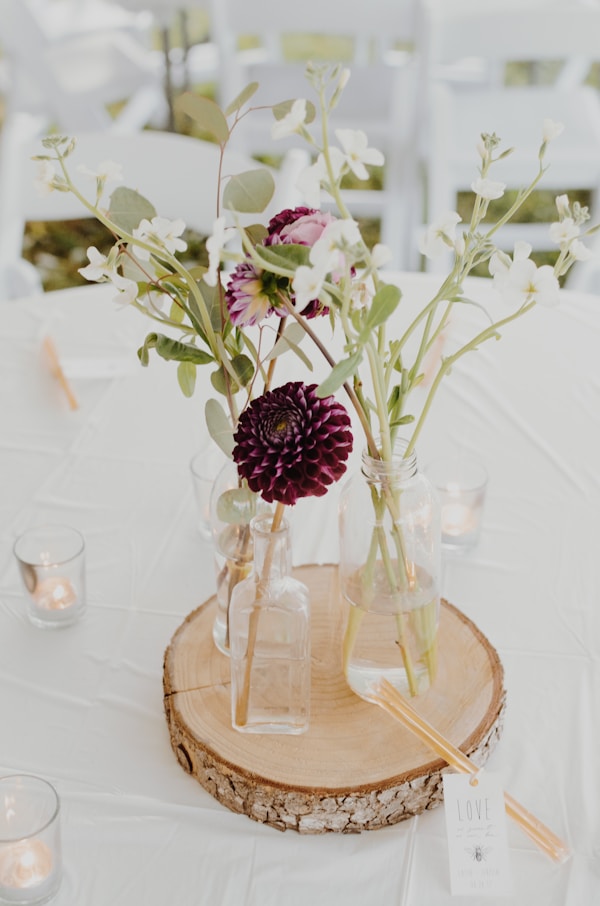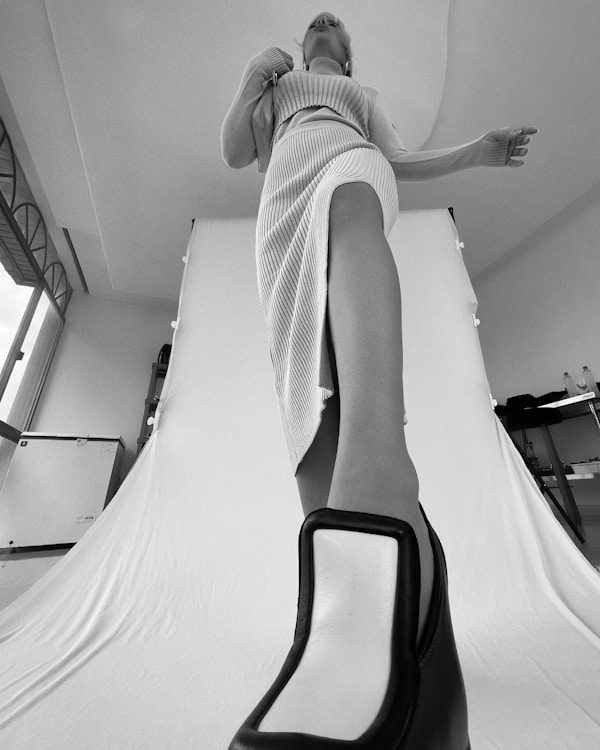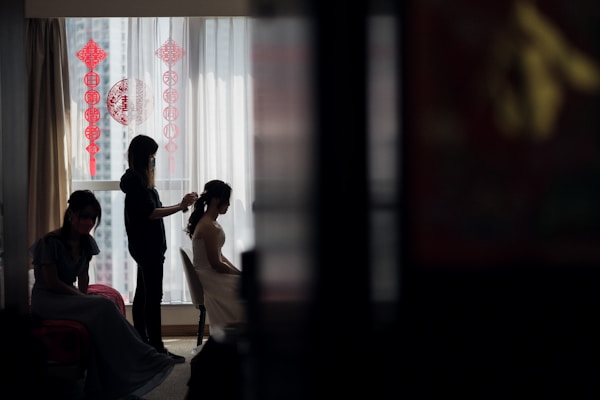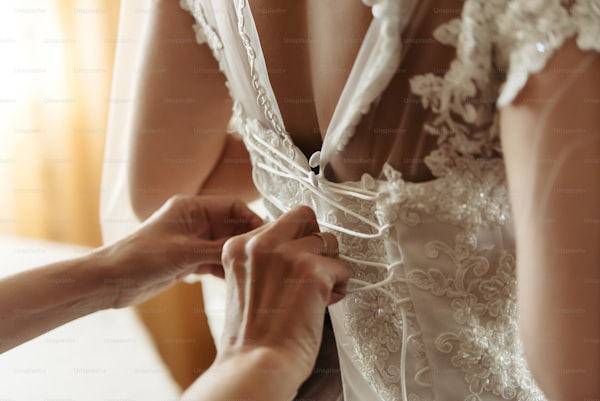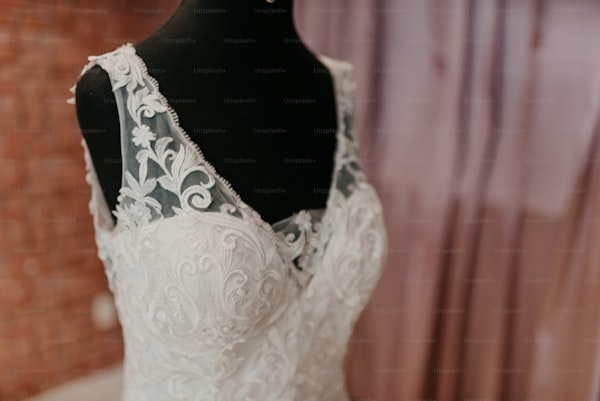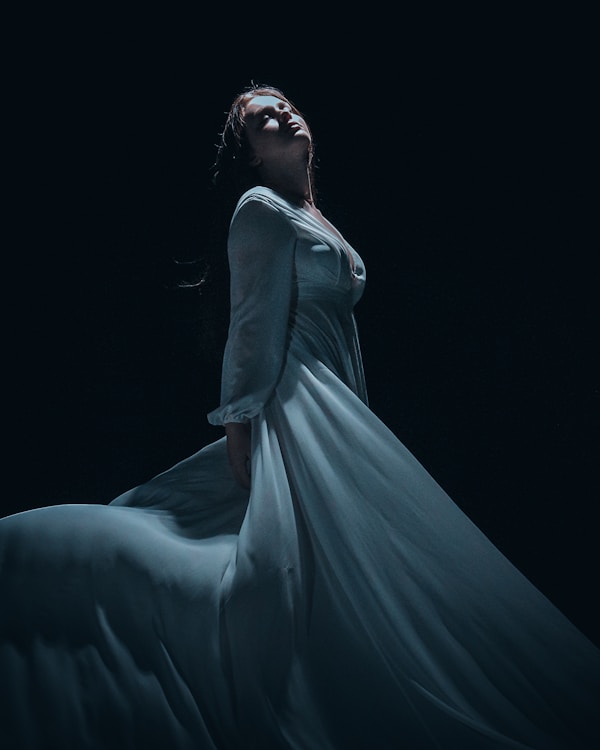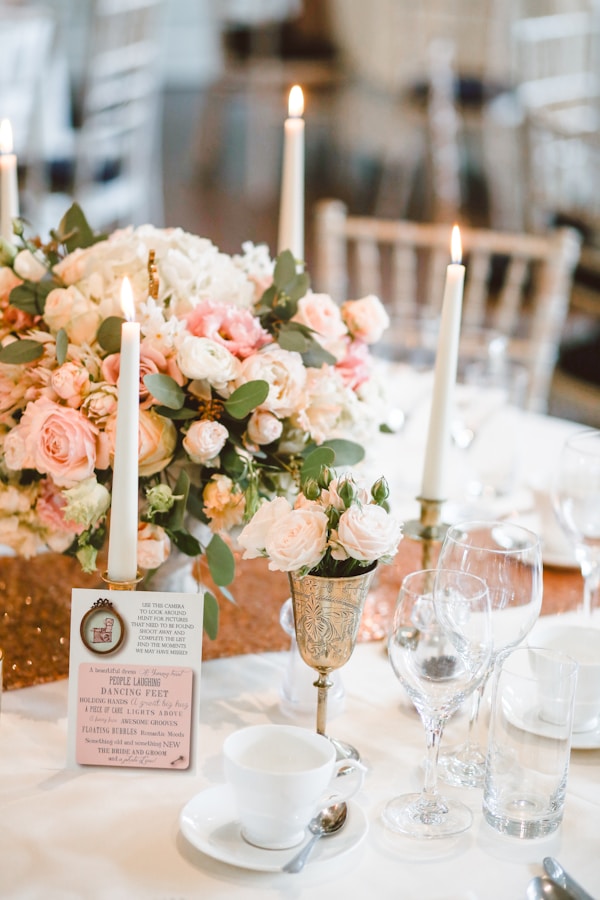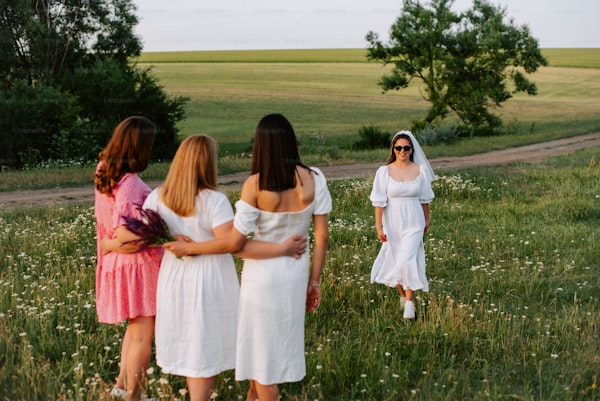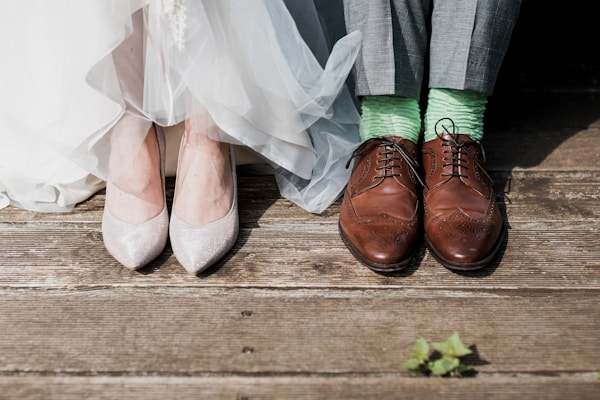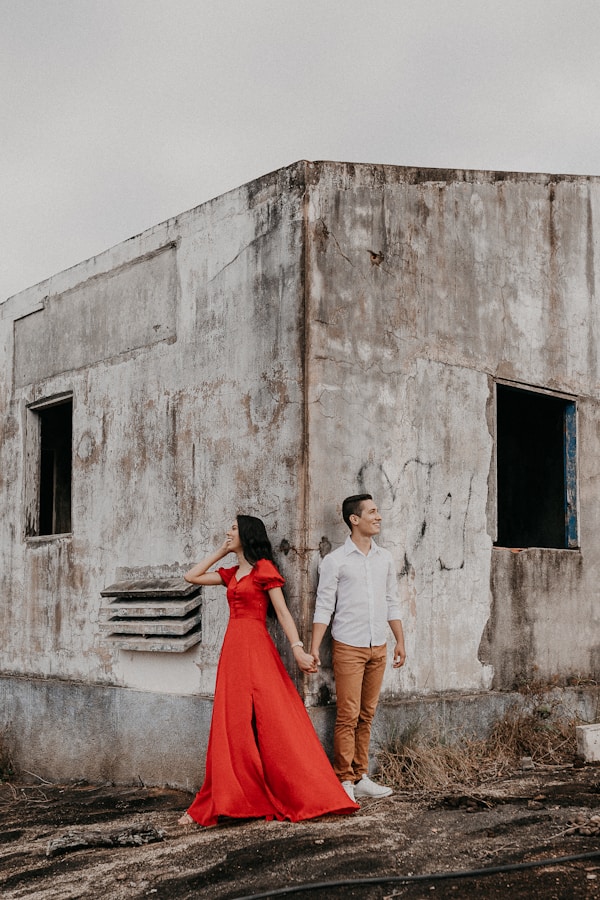The Ultimate Guide to Bridal Gown Fitting: What You Need to Know
Understanding the Bridal Gown Fitting ProcessWhen it comes to planning your dream wedding, one of the most exciting yet nerve-wracking experiences is finding the perfect bridal gown. The bridal gown fitting is a crucial step in ensuring that your dress fits you flawlessly on your big day. In this guide, we will explore everything you need to know about bridal gown fittings, from what to expect during the process to tips on how to prepare. Whether you’re looking for advice on timing or options for custom alterations, we've got you covered.What is a Bridal Gown Fitting?A bridal gown fitting is a tailored appointment where you try on your wedding dress to ensure that it fits perfectly. This process typically takes place several weeks before your wedding date. The fitting allows the seamstress to make necessary adjustments to the gown, ensuring it flatters your figure and meets your expectations. Many brides wonder how many fittings are needed; usually, two to three fittings are standard, depending on the complexity of the alterations required.The Importance of TimingTiming is one of the most critical aspects of bridal gown fittings. It is recommended to schedule your first fitting about 4 to 6 weeks before your wedding day. At this point, you will have already received your gown, and your current measurements will help the seamstress determine any necessary adjustments. Waiting too long to schedule your fittings can lead to added stress, so make sure to plan ahead!How to Prepare...
How Do I Choose the Perfect Wedding Dress for My Body Type?
Choosing the perfect wedding dress is one of the most significant decisions a bride will make in her wedding planning process. It’s not just a dress; it's a reflection of your personal style, your love story, and of course, your unique body type. Understanding how to select a wedding dress that complements your figure can make all the difference on your special day. In this article, we’ll explore different body types, discuss various wedding dress styles that suit each body shape, and provide you with practical tips to ensure you find the dress of your dreams.Understanding Your Body TypeBefore diving into specific wedding dress styles, it’s important to identify your body type. Generally, there are five primary body shapes:Hourglass: Well-defined waist with balanced bust and hip measurements.Pear: Smaller bust with fuller hips and thighs.Apple: Broader shoulders with a less-defined waist and fuller bust.Rectangle: Similar bust and hip measurements with little definition at the waist.Inverted Triangle: Broader shoulders and bust with narrower hips.Table: Body Shapes and Corresponding Dress StylesBody TypeRecommended Dress StyleFeatures to HighlightHourglassA-line, Mermaid, Fit-and-FlareWaist, curvesPearA-line, Ball Gown, Empire WaistWaist, elongated bodiceAppleA-line, Empire Waist, Shift DressLegs, décolletageRectangleBall Gown, A-lineShoulders, legsInverted TriangleA-line, V-neckLegs, waistChoosing the Right Wedding Dress StyleOnce you know your body type, the next step is to...
How Do I Know What Wedding Dress Size to Order? A Comprehensive Guide
Understanding Wedding Dress SizesPlanning for your big day involves numerous decisions, and one of the most important choices is selecting the perfect wedding dress. However, one question that often arises is: How do I know what wedding dress size to order? In this comprehensive guide, we will walk you through everything you need to know about finding the right size for your dream dress, including tips, measurements, and common concerns.The Importance of Getting the Right SizeChoosing the correct wedding dress size is crucial for a variety of reasons. A well-fitted dress will not only enhance how you look but also how comfortable you feel on your special day. Ill-fitting gowns can lead to discomfort, embarrassment, and even detract from your confidence as you walk down the aisle. Therefore, taking the time to measure accurately and understand sizing is essential.Common Wedding Dress Size ChartsMost bridal designers have their own size charts, and these can vary significantly from standard dress sizes. Below is a general size chart outlining typical wedding dress sizes:US SizeBust (inches)Waist (inches)Hip (inches)031.523.534.5232.524.535.5433.525.536.5634.526.537.5835.527.538.51036.528.539.51237.529.540.5143931421640.532.543.518423445Taking Your MeasurementsBefore ordering your wedding dress, it's essential to take the right measurements. Here’s how you can do it:Bust: Measure around the fullest part of your bust, keeping the measuring tape level across your back.Waist: Find ...
What to Expect During a Wedding Dress Fitting: A Comprehensive Guide
Your Ultimate Guide to Wedding Dress FittingsWedding dress fittings can be one of the most exciting yet nerve-wracking experiences for brides-to-be. It's a pivotal part of the wedding planning process, and understanding what to expect can help ease any anxiety. In this comprehensive guide, we’ll explore all the essential elements of wedding dress fittings, from the initial appointment to the final adjustments, ensuring you feel fully prepared for this significant milestone.What is a Wedding Dress Fitting?A wedding dress fitting is an appointment where you try on your wedding dress and make necessary adjustments to ensure it fits perfectly. This process usually takes place several months before your wedding date. Depending on the complexity of the dress and your specific needs, multiple fittings may be required to achieve the perfect fit.Types of FittingsThere are generally three main types of fittings you can expect:Fitting TypeDescriptionInitial FittingDuring the initial fitting, you will try on the wedding dress for the first time. The seamstress will assess the necessary alterations, which may include adjusting the hemline, waist, or bust area.Mid-way FittingThis fitting typically occurs after the dress has undergone major adjustments. You will try on the dress again to ensure that the modifications are correct and to see how it fits as your wedding day approaches.Final FittingYour final fitting is the last opportunity to try on your dress before the big day. The seamstre...
How to Determine If a Wedding Dress Fits Properly: A Comprehensive Guide
IntroductionFinding the perfect wedding dress is a monumental task for many brides-to-be. However, one of the most crucial aspects that can make or break the overall look is ensuring that the wedding dress fits properly. A well-fitting gown not only enhances your appearance but also ensures comfort on one of the biggest days of your life. So, how do you know if a wedding dress fits properly? In this article, we will explore various criteria that indicate a proper fit, common issues, tips for fitting appointments, and more.Key Indicators of a Proper FitWhen assessing the fit of a wedding dress, there are several specific areas to focus on. Here are some essential indicators:Area to CheckWhat to Look ForBustThe dress should fit snugly but not be too tight. A gap at the top indicates it might be too big, while spilling over may suggest a smaller size is needed.WaistYour waist should be defined. If the fabric is bunched up or if you can fit more than two fingers between the fabric and your body, it's likely too loose.HipsMake sure you have enough room to walk comfortably without any fabric pulling or bunching at the seams.LengthThe ideal length should allow for proper walking without the hem dragging on the floor; heels can affect this, so wear your wedding shoes during fitting.Straps/SleevesEnsure they sit comfortably without digging into your skin or slipping off your shoulders.Common Fitting IssuesEven if you think you've found the right size, some common issues can arise duri...
How Do I Prepare for My First Wedding Dress Fitting? A Complete Guide
Your Essential Guide to Preparing for Your First Wedding Dress FittingGetting ready for your first wedding dress fitting is an exciting yet sometimes overwhelming experience. Understanding how to prepare properly can help ensure that you find the dress of your dreams. In this article, we'll explore the important measures you should take before your fitting, common questions brides ask, and tips to make the process smoother. So, let’s dive in!Why Preparing for Your Fitting Is ImportantMany brides underestimate the importance of preparation before their wedding dress fitting. A well-prepared visit can lead to a more enjoyable experience, allowing you to focus on finding that perfect gown. By knowing what to expect, you can avoid unnecessary stress and confusion. Here are some key reasons why preparation is critical: Time Efficiency: Planning ahead helps you spend your time wisely during the fitting. Dress Suggestions: You’ll have a clearer idea of your preferences, enabling the consultant to offer the best dress options. Body Confidence: Being prepared helps you feel more confident in trying on multiple dresses.Steps to Prepare for Your First Wedding Dress FittingNow that you understand why preparation is important, let’s go through the steps you should take before your first fitting. Following these tips will help ensure you’re ready for the big day!1. Set Your BudgetBefore you start trying on wedding gowns, it’s crucial to determine how much you’re willing to spend. Weddin...
What to Expect During Your First Wedding Dress Fitting: A Complete Guide
Your Guide to Navigating Wedding Dress FittingsGetting ready for your wedding day is a thrilling journey, and one of the most exciting milestones is your first wedding dress fitting. However, you may find yourself wondering, “What should I expect during my first wedding dress fitting?” In this comprehensive guide, we will walk you through the process, what you need to prepare, and tips to make the most out of your experience.Understanding the Wedding Dress Fitting ProcessBefore you dive into your first fitting, it's essential to understand what a wedding dress fitting entails. Essentially, a fitting is a detailed appointment focused on ensuring that your dress fits like a glove. Here are the main stages:StageDescriptionConsultationYour stylist will discuss your vision, preferences, and any adjustments needed.Initial FittingThe dress will be tried on, and the stylist will take your measurements.AdjustmentsAny necessary alterations are noted for the next fitting.Final FittingAmazing fitting with final touches and a fitting review to ensure perfection.What to Bring to Your First FittingWhen preparing for your fitting, there are a few important items and concepts to keep in mind. Make sure to bring:Underwear: Wear the undergarments you plan to sport on your wedding day, such as a strapless bra, to assess how the dress fits over these garments.Footwear: If you have chosen your wedding shoes, bring them along. The heel height can significantly affect the dress length and overall lo...
How Many Fittings Are Typically Required for a Wedding Dress?
The Journey to the Perfect Wedding DressChoosing the perfect wedding dress is one of the most exciting and crucial decisions brides make in preparation for their big day. The process is not just about selecting a beautiful gown; it also involves ensuring that it fits perfectly. A common question among brides is, “How many fittings are typically required for a wedding dress?” In this article, we will explore the fitting process, what brides can expect, and how to prepare for these important appointments.Understanding the Fitting ProcessGetting a wedding dress altered is a process that usually involves multiple fittings to achieve the desired fit. The number of fittings required can vary based on several factors, including the design of the dress, the material, and the individual body shape of the bride. Typically, brides can expect anywhere from two to five fittings, each serving a specific purpose.Factors Influencing the Number of FittingsSeveral factors can affect how many fittings you’ll need. Here are some key considerations: Dress Complexity: More intricate designs may require additional fittings to ensure the gown hangs correctly and all details are perfect. Body Shape Changes: Brides often experience weight fluctuations leading up to the wedding. More fittings may be necessary to accommodate these changes. Material: Certain fabrics are easier to alter than others. Heavier materials may require extra precision, leading to more fittings. Initial Fit: If the in...
How to Find a Wedding Dress That Flatter Your Figure: A Comprehensive Guide
Understanding Your Body ShapeFinding the perfect wedding dress is a crucial part of your big day. It's not just about style; it’s about understanding your figure and choosing a dress that highlights your best features. Different body types require different styles, and knowing yours will help you narrow down your options. The most common body shapes include:Body ShapeDescriptionHourglassDefined waistline with proportions balanced between bust and hips.PearNarrow shoulders and smaller bust with wider hips.AppleWider torso with less defined waist and fuller bust.RectangleSimilar bust and hip measurements with minimal waist definition.Inverted TriangleBroad shoulders and larger bust with narrower hips.Identifying Your Body ShapeTo begin your journey in finding a wedding dress that flatters your figure, you first need to identify your body shape. Here’s how you can do this:Measure Yourself: Take measurements of your bust, waist, and hips. This will give you a clear understanding of your proportions.Observe Your Silhouette: Stand in front of a mirror and take note of where your body is widest and where it narrows.Compare with Body Shape Categories: Use your measurements to identify which body shape category you fall into.Choosing the Right Wedding Dress StyleOnce you’ve identified your body shape, it’s time to explore wedding dress styles that will accentuate your figure. Here are some recommendations:Hourglass: Opt for fitted gowns that emphasize your waist. A-line and mermaid cu...
What Should I Do If My Wedding Dress Doesn’t Fit on the Wedding Day?
Understanding the Dilemma of a Misfitting Wedding DressEvery bride dreams of a perfect wedding day, where everything goes smoothly and the stunning wedding dress fits like a glove. However, what happens if your wedding dress doesn’t fit on the big day? This common concern can turn excitement into panic, but don’t fret. Below, we provide you with a comprehensive guide on how to handle this situation gracefully.Common Causes of Wedding Dress MisfitBefore delving into solutions, it's crucial to understand why this may occur in the first place. Below are some common reasons:CausesDetailsLast-minute weight changesWhether due to stress or dietary changes, many brides experience fluctuations in weight leading up to their wedding day.Poor fitting during alterationsIf the alterations are not done correctly, they may not offer the intended fit.Size discrepanciesSizes may vary between different bridal shops or designers, resulting in a mismatch.Dress style changesSome dress styles may fit differently due to factors like fabric elasticity and design structure.Initial Steps to TakeIf you find yourself in a situation where your wedding dress doesn’t fit, keep calm. The first thing to do is to assess the situation thoroughly:Take a Deep Breath: Before panicking, spend a moment to breathe and gather your thoughts.Examine the Fit: Identify if the dress is too tight, too loose, or if it just doesn’t sit properly.Check the Time: Depending on the time left before the ceremony, immediate actions ...
How Do I Prepare for a Wedding Dress Fitting? Essential Tips and Guidelines
Your Comprehensive Guide to Wedding Dress Fitting PreparationPreparing for a wedding dress fitting is an exciting yet sometimes overwhelming experience for many brides-to-be. The thought of selecting the perfect gown can bring joy as well as anxiety. This article serves as your ultimate guide on how to prepare for a wedding dress fitting, ensuring that you walk into your appointment with confidence and clarity.Understanding the Importance of a Wedding Dress FittingWedding dress fittings are crucial for ensuring that your gown fits like a glove. A well-fitted dress highlights your best features and can enhance your overall bridal look. It’s important to understand that fittings are not just about trying on the dress; they are about creating a masterpiece that will add to your wedding day experience. Here’s why a proper fitting is essential: Perfect Fit: Ensures the dress flatters your body shape. Comfort: A well-fitted gown is more comfortable and allows ease of movement. Adjustment Opportunities: Identifies areas needing alteration before the final gown is ready.Essential Tips for Preparing for Your Wedding Dress FittingNow that you understand the importance of a fitting, let’s dive into the practical steps for preparation. Follow these tips to ensure your wedding dress fitting goes smoothly:1. Schedule Your Appointment WiselyChoose a time when you and your bridal party are least likely to be rushed or stressed. Weekday appointments may offer a more relaxed atmospher...
How to Ensure Your Wedding Dress Fits Perfectly: A Comprehensive Guide
Your Wedding Day: The Importance of a Perfectly Fitting DressChoosing the right wedding dress is one of the most exciting moments in a bride's journey to matrimony. However, ensuring that your wedding dress fits properly is crucial for comfort, confidence, and overall aesthetic on your special day. This article delves into the steps and considerations necessary for achieving the ideal fit for your wedding dress.Understanding the Fit: Why It MattersA well-fitting wedding dress not only enhances your silhouette but also allows you to move freely. Ill-fitting dresses can lead to discomfort and can take away from the joyous experience of your wedding day. As you embark on this important journey, keep in mind that looking stunning also means feeling comfortable. Here are several factors to consider: Comfort: You will wear your dress for hours, and it should allow for comfortable movement. Style: Different styles may fit differently; knowing your preferred silhouette can guide you. Alterations: Most dresses require some level of alteration for a tailored fit.Steps to Ensure a Perfect FitHere are some essential steps to make sure your wedding dress fits properly:1. Start with the Right SizeWedding dress sizes differ from everyday clothing sizes. A bridal gown can fit anywhere from a size 0 to a size 30. It’s advisable to go by the measurements rather than the number. Begin by taking accurate measurements of your bust, waist, and hips. Most bridal salons provide measurement ...
Choosing the Perfect Wedding Dress to Complement Your Wedding Shoes
Your wedding day is one of the most significant days of your life, and every detail matters—from the venue to the flowers, and of course, the attire. One of the biggest questions that brides-to-be often ask is, “How do I choose a wedding dress that works with my wedding shoes?” This vital decision can set the tone for your entire look and, ultimately, your comfort on the big day. In this comprehensive article, we will explore tips and tricks for selecting the perfect wedding dress that will flatter your wedding shoes while ensuring a cohesive style.Understanding the Basics: Wedding Dresses and ShoesBefore diving into the details, it’s crucial to understand the role that both the wedding dress and shoes play in your bridal ensemble. Your wedding dress serves as the main canvas, while your shoes are like the finishing touches that complete your look. Here are a few critical aspects to consider:1. Style of the Wedding DressDifferent styles of wedding dresses can lead to varying levels of interaction with your shoes. Here are some popular styles:Wedding Dress StyleRecommended Shoe TypeComplementary FeaturesA-LineSandals or FlatsEnhances movement and emphasizes the waist.Ball GownHeeled PumpsCreates a dramatic silhouette.MermaidElegant HeelsAccentuates curves and lengthens the legs.SheathSleek StilettosSimplistic and modern, elongates the body.Choosing the style of your dress is a subjective decision that should reflect your personal taste and wedding theme. It is always essential...
How to Choose a Wedding Dress That Enhances Your Figure
Choosing the Perfect Wedding Dress for Your FigureEvery bride dreams of looking perfect on her wedding day. However, with so many styles and designs available, choosing a wedding dress that enhances your figure can be challenging. This guide will walk you through the considerations you should make and provide tips to help you choose the ideal dress that will complement your unique shape.Understanding Your Body ShapeThe first step in selecting a wedding dress that enhances your figure is to understand your body shape. Generally, there are five main body types: hourglass, pear, apple, rectangle, and inverted triangle. Here’s a brief overview of each:Body ShapeDescriptionRecommended Dress StylesHourglassDefined waist, bust, and hips are of similar proportions.A-line, mermaid, and fitted gownsPearNarrow shoulders with wider hips.Ball gown, A-line, and empire waistAppleWider waist with a fuller bust and narrow hips.Empire waist, A-line, and trunk gownsRectangleSimilar width at shoulders, waist, and hips.Sheath, trumpet, and fit-and-flare gownsInverted TriangleBroad shoulders with narrower hips.A-line, ball gown, and drop waistResearching Wedding Dress StylesOnce you understand your body shape, it's time to explore various wedding dress styles that emphasize your best features. Here are some popular styles and how they work with different figures:A-Line DressesA-line dresses are flattering for nearly all body types. The fitted bodice flows into a skirt that gradually widens at the ...
How to Find a Wedding Dress That Enhances Your Bridal Look
Every bride dreams of finding the perfect wedding dress that not only fits comfortably but also enhances her bridal look. A wedding dress is more than just an outfit; it represents a significant milestone in your life. The right dress can highlight your unique beauty and reflect your personality. In this comprehensive guide, we will explore effective strategies for finding a wedding dress that amplifies your bridal look, from understanding your body type to color choices, and even the latest design trends.Understanding Your Body TypeThe first step in selecting the perfect wedding dress is understanding your body type. Knowing your proportions will help you choose a dress that flatters your figure. Let's break down the different body types:Body TypeDescriptionRecommended SilhouettesAppleWider shoulder width with a fuller midsectionA-line, empire waistPearNarrower shoulders with wider hipsA-line, ball gownRectangleSimilar measurements in the bust, waist, and hipsSheath, trumpetHourglassDefined waist with balanced bust and hipsMermaid, fittedBy understanding these categories, brides can make more informed decisions regarding neckline, fabric, and silhouette.Choosing the Right MeasurementsOnce you know your body type, it’s essential to take accurate measurements. This step ensures your dress fits perfectly. Here’s how to measure yourself:Bust: Measure around the fullest part of your bust.Waist: Measure at your natural waistline, keeping the tape snug but not tight.Hips: Measure a...
Choosing a Wedding Dress That Enhances Your Natural Features: A Comprehensive Guide
Understanding the Importance of a Wedding DressYour wedding day is one of the most significant events in your life, and your dress is a symbol of that special moment. Choosing a wedding dress that enhances your natural features is crucial not only for looking beautiful but also for feeling confident. In this article, we will explore how to select the perfect dress, taking into account your body shape, personal style, and various factors that contribute to a stunning appearance.1. Knowing Your Body ShapeBefore diving into fabrics and trends, understanding your body shape is essential. Different dresses flatter different silhouettes, and identifying your shape can guide you in finding the best choices. There are generally five body shapes: hourglass, pear, apple, rectangle, and inverted triangle. Here’s a breakdown of each and how they can influence your dress decision:Body ShapeDress Style SuggestionsHourglassMermaid or A-line dresses that highlight your curves.PearA-line or empire waist dresses that draw attention to the upper body.AppleEmpire waist or flowy dresses that offer structure without clinging.RectangleSheath or ball gown styles that create the illusion of curves.Inverted TriangleA-line or fit-and-flare styles that balance broader shoulders.2. Celebrating Your Personal StyleYour wedding dress is an extension of your personal style. Whether you gravitate towards classic, bohemian, vintage, or modern looks, incorporating your style helps you feel authentic and comfort...
How to Choose a Wedding Dress That Perfectly Suits Your Body Type
Choosing the right wedding dress is one of the most exciting yet daunting tasks for any bride-to-be. With so many styles, fabrics, and designs available, it can be overwhelming to make a choice. However, understanding your body type and selecting a dress that complements your shape can make all the difference. In this article, we will guide you through the process of choosing a wedding dress that suits your body type, ensuring you look and feel your best on your special day.Understanding Body TypesBefore you start the search for your dream wedding dress, it's essential to identify your body type. Each body type has unique characteristics, and understanding these can help narrow down your options. The most common body types include:Body TypeCharacteristicsRecommended StylesHourglassDefined waist with balanced bust and hips.A-line, fitted, mermaid.AppleFuller upper body with narrower hips and legs.Empire waist, A-line, wrap dresses.PearNarrow shoulders, wider hips, and a defined waist.Ball gown, A-line, off-the-shoulder.RectangleSimilar measurements for bust, waist, and hips.Fit-and-flare, mermaid, layered styles.Inverted TriangleBroader shoulders with narrower hips.A-line, sheath, and V-necklines.Choosing the Right Dress for Your Body TypeNow that you have identified your body type, let’s dive deeper into how to choose a wedding dress that flatters your figure.1. Hourglass Body TypeIf you have an hourglass figure, you're in luck! Most wedding dress styles will suit you. Look f...
Unlock the Secrets: How Do I Find a Wedding Dress That Enhances My Wedding Day Look?
Planning a wedding can be both exhilarating and overwhelming, especially when it comes to selecting the perfect wedding dress. As you embark on this important journey, you may find yourself asking the question: How do I find a wedding dress that enhances my wedding day look? In this comprehensive guide, we will explore various aspects of choosing the ideal wedding dress, ensuring that your special day is as magical as you’ve always envisioned. The Importance of Choosing the Right Wedding Dress Your wedding dress is not only a reflection of your personal style, but it also sets the tone for your wedding day. It is the centerpiece of your bridal look, and how you feel in it can significantly impact your confidence and joy. Therefore, it's essential to invest time in understanding what enhances your wedding day look. Understanding Your Body Type One of the first steps in finding a wedding dress that enhances your look is understanding your body type. Here’s a brief overview of some common body types: Body TypeRecommended StylesStyles to AvoidA-shapeEmpire waist, A-lineForm-fitting stylesAppleEmpire waist, V-neckLots of fabric around the waistHourglassMermaid, fitted gownsBoxy stylesRectangleBall gown, layered stylesSheath dressesUnderstanding your body type not only helps in choosing styles that flatter your figure but also enhances your overall wedding day look. You want to ensure that your dress accentuates your best features while providing comfort and confidence. Choosing ...
Discover the Perfect Wedding Dress: Flattering Waistline Options
Your Ultimate Guide to Wedding Dresses with a Flattering WaistlineChoosing the perfect wedding dress can be one of the most exciting yet daunting tasks for brides-to-be. One of the most critical factors to consider is the waistline of the dress. A flattering waistline can enhance your figure and create a stunning silhouette. In this article, we explore various options for a wedding dress that highlights a flattering waistline.Understanding Different Waistline StylesBefore diving into specific dress options, it’s essential to understand the different waistline styles available. Each style offers a unique appeal and suits various body shapes: Empire Waist: This style features a high waistline that sits just under the bust, flowing down to the skirt. It’s perfect for petite brides and those who want to create the illusion of height. Natural Waist: The natural waistline emphasizes the smallest part of the waist and is universally flattering. It works well with A-line dresses and ball gowns. Basque Waist: This waistline dips down in the front, creating an hourglass figure. It’s particularly flattering for curvy brides. Dropped Waist: This style sits lower on the hips, giving a more dramatic effect and is ideal for showcasing curves.Top Wedding Dress Options with a Flattering Waistline1. A-Line DressesA-line dresses are characterized by a fitted bodice and a flared skirt that resembles the shape of a capital letter "A". This style is incredibly versatile and complements nearly ...
Discover the Benefits of a Wedding Dress with a Dropped Waist
What is a Dropped Waist Wedding Dress?A dropped waist wedding dress features a silhouette where the waistline is positioned lower than the natural waist, often around the hips. This unique design can create a visually elongating effect, offering brides a chic alternative to traditional styles. But what are the specific benefits of choosing a dropped waist wedding dress? Let’s explore.1. Flattering SilhouetteOne of the main advantages of a dropped waist wedding dress is its ability to flatter various body types. By lowering the waistline, this style highlights the natural curves of the body, making it an excellent choice for brides who want to accentuate their hips and elongate their figure. The overall shape promotes a smooth transition from the bodice to the skirt, enhancing the bride's overall appearance.Table of BenefitsBenefitDescriptionFlattering ShapeEnhances curves and creates a longer look.ComfortEasier movement due to less restriction around the waist.Variety of DesignsAvailable in numerous styles, fabrics, and embellishments.Unique StyleOffers a contemporary look that stands out from traditional gowns.2. Enhanced ComfortComfort is key on your wedding day, and a dropped waist wedding dress can provide just that. With its design, the gown tends to be less restrictive, allowing for more freedom of movement compared to traditional styles. This benefit is particularly noticeable during activities like dancing or walking down the aisle.3. Versatile Design OptionsDropped w...
